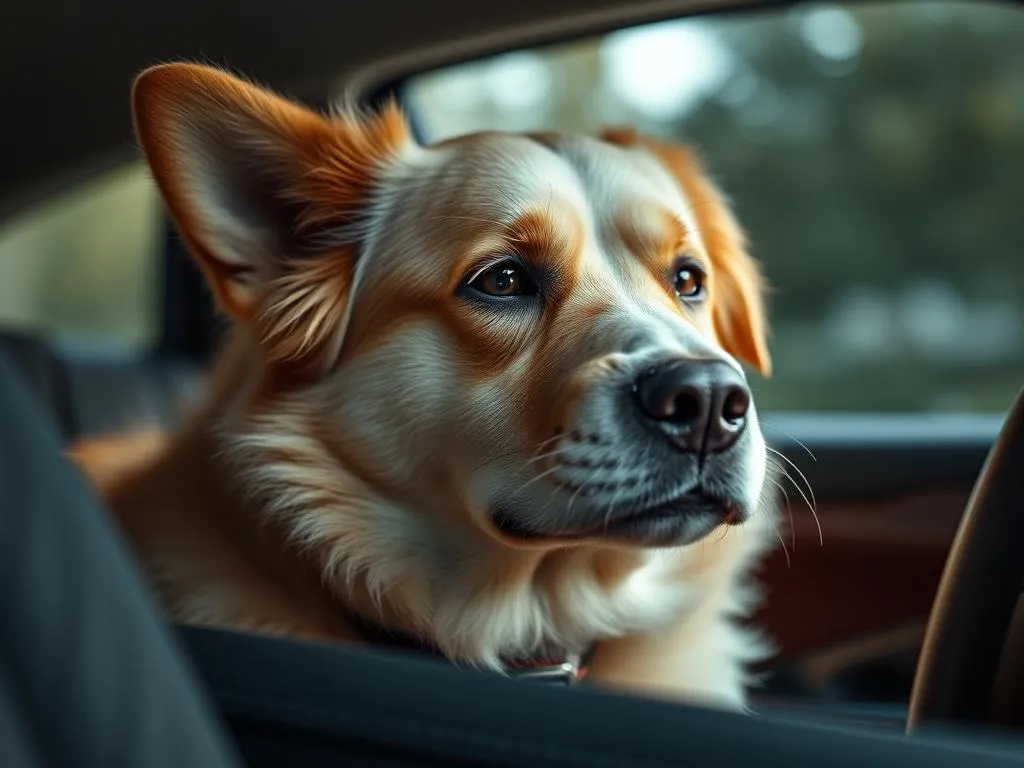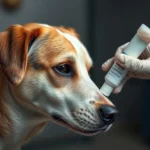
Introduction
As a dog owner, ensuring the health and well-being of your furry companion is a top priority. Among the many aspects of dog health care, managing anxiety during car rides is a common challenge that many pet owners face. For some dogs, car rides can provoke anxiety and distress, turning what should be an enjoyable outing into a stressful experience.
In this blog post, we will explore various techniques on how to calm your dog down in the car. By understanding the reasons behind your dog’s anxiety, preparing adequately for car trips, and applying effective calming strategies, you can help make car travel a more pleasant experience for both you and your dog.
Understanding Why Dogs Get Anxious in Cars
Common Triggers of Anxiety in Dogs
Understanding the root causes of your dog’s anxiety is crucial in addressing the issue effectively. Here are some common triggers:
-
Motion Sickness: Just like humans, dogs can suffer from motion sickness, especially if they are not used to traveling in cars. Symptoms may include drooling, vomiting, and restlessness.
-
Fear of Enclosed Spaces: Some dogs feel anxious in confined spaces, and a car can feel restrictive to them. This fear may stem from their past experiences or innate tendencies.
-
Previous Negative Experiences: If your dog has had a bad experience in the car, such as getting sick or being involved in an accident, they may associate the car with that negative experience, leading to anxiety.
Signs of Anxiety in Dogs
Recognizing the signs of anxiety in your dog can help you address the problem more effectively. Common signs include:
- Whining or Barking: Vocalizations can be a clear sign that your dog is feeling distressed.
- Excessive Panting: Dogs may pant excessively as a response to anxiety.
- Restlessness and Pacing: If your dog can’t seem to settle down, this could indicate anxiety.
- Drooling and Vomiting: These physical symptoms can be signs of motion sickness or severe anxiety.
Preparing Your Dog for Car Rides
Preparation is key when it comes to easing your dog’s anxiety during car travel. Here are some effective strategies:
Choosing the Right Equipment
-
Dog Seat Belts and Harnesses: Using a dog seat belt or harness can keep your dog secure and prevent sudden movements that may increase anxiety.
-
Crates and Carriers: For dogs that feel more secure in a confined space, using a crate or carrier can provide comfort during the ride.
-
Comfort Items: Bringing along your dog’s favorite blanket or toy can help create a familiar environment, reducing anxiety.
Gradual Desensitization
-
Exposing Your Dog to the Car Gradually: Start by letting your dog explore the car while it’s stationary. Encourage them to enter and exit freely.
-
Short Trips to Build Confidence: Once your dog is comfortable with the car, take short trips around the block, gradually increasing the distance as they become more at ease.
Creating Positive Associations
-
Using Treats and Praise: Reward your dog with treats and praise for calm behavior in the car. This reinforces positive associations with car rides.
-
Playing Calming Music or Sounds: Some dogs respond well to calming music or sounds. Consider playing soft music during your journeys to create a relaxing atmosphere.
Techniques to Calm Your Dog During the Car Ride
Once you’ve prepared your dog for car travel, implementing calming techniques during the ride can further alleviate anxiety.
Calming Aids and Products
-
Natural Calming Supplements: Products such as CBD oil or calming chews can help relieve anxiety for some dogs. Always consult your vet before trying any new supplements.
-
Prescription Medications from a Veterinarian: In cases of severe anxiety, your veterinarian may prescribe medication to help calm your dog during travel.
Behavioral Techniques
-
Deep Breathing Exercises for the Dog: Just like humans, dogs can benefit from deep breathing. Encourage your dog to take slow, deep breaths by remaining calm and using soothing tones.
-
Using Calming Commands or Cues: Teaching your dog commands such as “relax” or “settle” can help them learn to calm down when they start to feel anxious.
Environmental Adjustments
-
Temperature Control in the Car: Ensure the car is at a comfortable temperature. Dogs may become more anxious if they are too hot or cold.
-
Reducing Distractions: Minimize distractions within the car by keeping noise levels low and avoiding sudden movements that may startle your dog.
Long-term Strategies for Reducing Travel Anxiety
While immediate techniques can help during a car ride, long-term strategies can create lasting change in your dog’s behavior.
Regular Car Training Sessions
-
Incorporating Car Rides into Daily Routines: Make car rides a regular part of your dog’s routine, even if it’s just for short trips. This can help normalize the experience.
-
Gradually Increasing Ride Duration: As your dog becomes more comfortable, increase the duration of car rides gradually to help them adjust.
Socialization with Various Environments
-
Taking Your Dog to Different Locations: Exposing your dog to various environments can reduce anxiety. Take them to parks, pet-friendly stores, and other dog-friendly locations.
-
Engaging with Other Dogs in Safe Settings: Socializing with other dogs can help your dog feel more comfortable and confident in new situations, including car rides.
Monitoring Health and Comfort
-
Regular Vet Check-Ups for Health Issues: Sometimes, anxiety can be a symptom of underlying health issues. Regular vet visits can help rule out medical problems.
-
Maintaining a Healthy Lifestyle: A balanced diet and regular exercise can improve your dog’s overall well-being, which may help alleviate anxiety.
Safety Considerations for Traveling with Dogs
Ensuring the safety of your dog during travel is just as important as their comfort.
Legal Requirements for Dog Travel
- Understanding Local Laws Regarding Pet Travel: Be aware of local regulations concerning pet travel, as some areas have specific requirements for transporting pets safely.
Emergency Preparedness
-
First Aid Kits for Dogs: Always keep a first aid kit in your car, including items like bandages, antiseptic, and any necessary medications.
-
Identifying Nearby Veterinary Services During Travel: Plan ahead by researching veterinary services along your travel route in case of emergencies.
Keeping Your Dog Safe During the Ride
-
Proper Restraint Techniques: Always use appropriate restraints to keep your dog secure. This not only protects your dog but also ensures the safety of all passengers in the vehicle.
-
Avoiding Distractions for the Driver: Never allow your dog to roam freely in the car while driving. This can be distracting and dangerous for everyone.
Frequently Asked Questions (FAQs)
Can I give my dog human medications for anxiety?
No, you should never give your dog human medications without consulting a veterinarian. Many human medications can be harmful or even fatal to dogs.
How long does it take for calming aids to work?
The effectiveness and timing of calming aids can vary. Some supplements may take effect within a few hours, while others might need to be taken consistently over time. Always follow your vet’s recommendations.
What should I do if my dog gets sick in the car?
If your dog gets sick during a car ride, stop the car safely and assess the situation. Clean them up and ensure they’re comfortable. If it continues, consult your veterinarian for advice.
Are certain breeds more prone to car anxiety?
Yes, some breeds may be more prone to anxiety due to their temperament or past experiences. Breeds known for being sensitive may require extra care when traveling.
Conclusion
Addressing your dog’s anxiety during car rides is an essential part of responsible dog health care. By understanding the causes of anxiety, preparing properly, and applying effective calming techniques, you can transform car travel from a stressful ordeal into an enjoyable experience for both you and your furry friend.
With patience and preparation, you can help your dog feel safe and secure on every journey. Remember, every dog is unique, and finding the right combination of strategies may take time. Don’t hesitate to consult a professional if needed, as they can provide valuable insights tailored to your dog’s specific needs.
As you embark on your travels together, keep in mind that a calm dog makes for a happy car ride!









